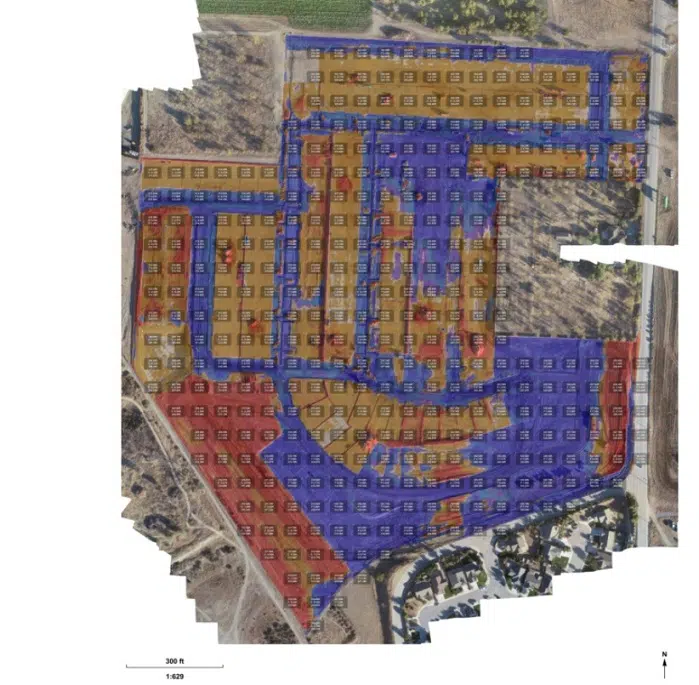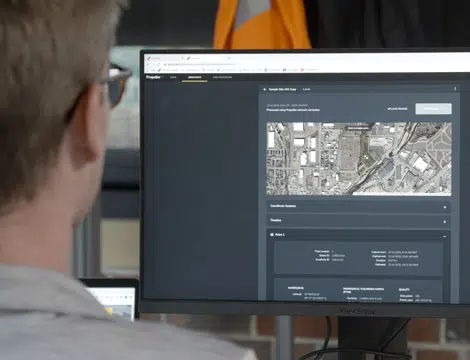Five tips to build more accurate project estimates
Developing an estimate for sitework can be a bit tricky. Bid too high, and you could lose the business to a competitor. Bid too low, and you could lose money on the project.
After collecting information and getting a handle on the customer specifications, estimators present their findings and propose the project budget to their company’s management. That’s why getting an accurate assessment of the land ahead of time is so important. Traditionally, project bids were based on the overseeing engineer’s final design combined with the best data available on the current ground conditions of the site—which sometimes would come from an outdated survey, leading to inaccurate estimates.
Perfecting your estimating skills means winning more customers, maximizing your revenue, and ensuring your projects run as efficiently as possible. The more data you’re able to obtain about a prospective worksite, the more of an edge you have over your competitors during the bidding process. Here, we share five tips for increasing the accuracy of your estimates.
1. Conduct a map-based analysis of the site
Today, technology is considered essential for sitework. Mapping a prospective job with a drone combines the best GIS and survey technologies. It’s fast, cost-effective, and produces easy-to-read results. Each drone survey yields millions of data points in the form of a 3D map you can use as a visual reference point throughout the project.
You need accurate data to win bids, and the information you capture during your drone survey can be used to quickly create a digital representation of the site. This map-based analysis will give you an idea of the exact volumes that will need to be moved when compared to the project final design. Using Propeller’s design-to-design measurement tool, estimators can better use their data to produce high-quality, competitive submissions—and win more bids.
Using an interactive 3D map can help you:
- Correctly estimate the project size and scale
- Review models, including cut-fill analysis, and precisely measure elevations
- Quickly calculate worksite volume, surface area, and cross-section comparisons
- Overlay designs against survey data, or designs against designs
- Review past bids to eliminate future mistakes
2. Create transparency among your stakeholders
Using Propeller to create a 3D map of a worksite helps keep all project stakeholders informed about where the scope of the project begins and ends. You’ll be able to deliver a precise estimate of what work your company will be responsible for, and that estimate clarity means fewer disputes down the line, reducing the chance for rework. By leveraging the 3D map, you can quickly identify areas of possible risk or inefficiency up front, providing enhanced communication and collaboration among all project stakeholders, both internal and external.

3. Perform precise takeoffs and faster topos
Takeoffs lay the groundwork for your estimates. If they’re incomplete or inaccurate, your calculations will also be off. An accurate takeoff will help you determine the precise quantities required for variables like materials, equipment, and labor–all of which are imperative for a precise estimate.
With Propeller you can turn a survey into an interactive 3D map where the whole project team can review the data and make informed decisions about the takeoffs. Aerial mapping with a drone allows you to obtain accurate measurements in hours instead of days, even on a large worksite. You’ll know exactly how much dirt needs to move, whether you can balance the site, and what the terrain will look like the day you begin work.
4. Keep all your data in one place
As businesses take on new work, they adopt new technologies to enhance their workflows and save time. This can lead to relying on a variety of applications to manage projects. And when data resides in multiple spots, estimators may not be pulling from the right information to make sound bidding decisions. These data siloes impair your project team’s ability to effectively communicate and collaborate. And when you’re not accessing the same information, you can’t build accurate estimates.
Propeller gives you a single source of truth where everyone on the project team can easily access the same data, allowing you to make better decisions. You also have the ability to review past projects to see what worked well and where you can improve, which allows you to fine tune your estimating process. Then, once work gets underway, you can create regular progress reports and maintain a centralized system of record for the project. Progress reports keep clients apprised of what work has been completed, providing the data and visuals needed to verify that the project is on track and on budget.

5. Work smarter
Companies increasingly rely on state-of-the-art technology to stay competitive. As we’ve discussed, using a single source of truth for your estimates and sitework has many benefits, including increased accuracy, improved communication, and access to the data, both in the office and in the field.
This makes your operations more efficient, which benefits your business in the long run by:
- Helping you win more bids
- Generating more revenue and increasing your margins
- Preventing rework
- Increasing client satisfaction
- Improving your reputation
- Ensuring that projects run smoothly
- Earning you a seat at the project planning table for future jobs




